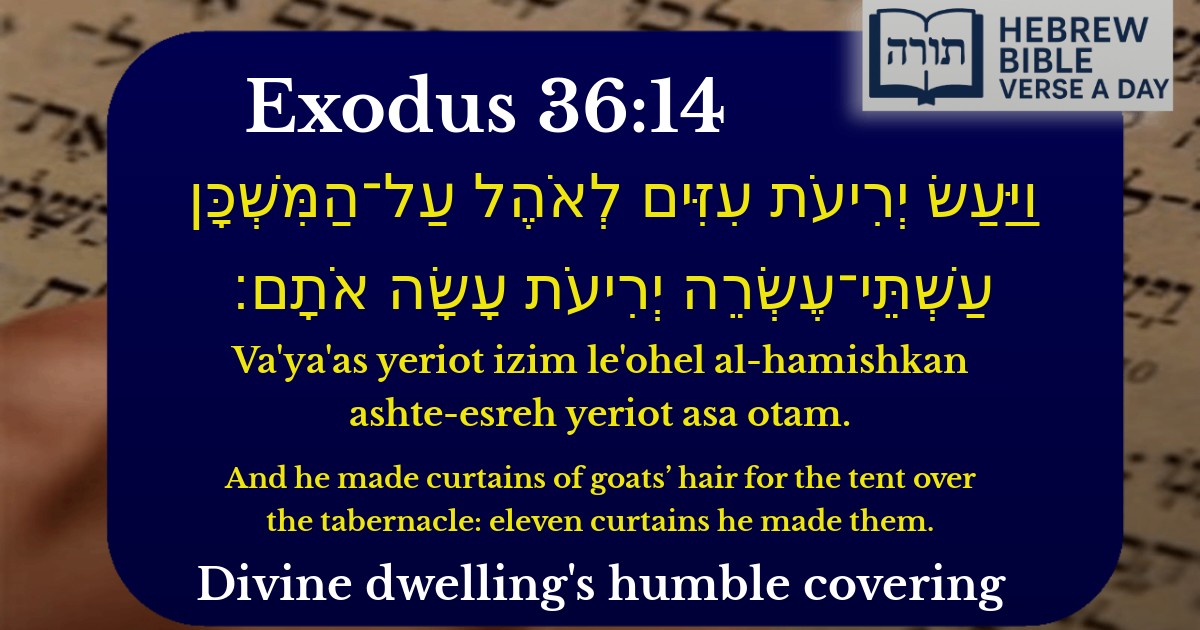Join Our Newsletter To Be Informed When New Videos Are Posted
Join the thousands of fellow Studends who rely on our videos to learn how to read the bible in Hebrew for free!
Hebrew Text
וַיַּעַשׂ יְרִיעֹת עִזִּים לְאֹהֶל עַל־הַמִּשְׁכָּן עַשְׁתֵּי־עֶשְׂרֵה יְרִיעֹת עָשָׂה אֹתָם׃
English Translation
And he made curtains of goats’ hair for the tent over the tabernacle: eleven curtains he made them.
Transliteration
Va'ya'as yeriot izim le'ohel al-hamishkan ashte-esreh yeriot asa otam.
Hebrew Leining Text
וַיַּ֙עַשׂ֙ יְרִיעֹ֣ת עִזִּ֔ים לְאֹ֖הֶל עַל־הַמִּשְׁכָּ֑ן עַשְׁתֵּֽי־עֶשְׂרֵ֥ה יְרִיעֹ֖ת עָשָׂ֥ה אֹתָֽם׃


The Curtains of Goats' Hair in the Mishkan
The verse (Shemot 36:14) describes the construction of the yeri'ot izim (curtains of goats' hair) that served as an outer covering for the Mishkan. Rashi explains that these eleven curtains were placed over the Mishkan's primary structure, serving as a protective layer above the ten curtains of fine linen (Shemot 26:1). The number eleven is significant—while the inner Mishkan required only ten curtains (corresponding to the Ten Commandments), the additional eleventh curtain, as the Ramban notes, provided extra coverage to ensure no part of the Mishkan was exposed.
Symbolism of the Goats' Hair
The Midrash (Tanchuma, Terumah 5) connects the goats' hair to the episode of Yaakov and Eisav, where Rivka dressed Yaakov in goatskins (Bereishit 27:16). Just as the goatskins concealed Yaakov's true identity to receive Yitzchak's blessing, the goats' hair curtains concealed the holiness of the Mishkan from the outside world. The Malbim adds that goats' hair, being coarse and humble, represents the idea that external appearances may conceal inner sanctity—much like the modest exterior of the Mishkan housed the Divine Presence.
Structural and Practical Insights